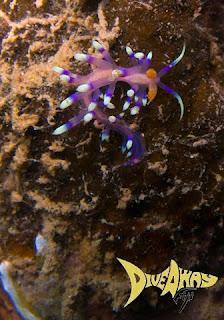Hey Guys and Gals!
I decided to sneak in before Chris and write the blog this week because I want to tell everyone about something very dear to my, and Diveaway Fiji’s heart, and that is our sharks.
Yes, I hate to break it to everyone, but the statistic is true, you do have more chance of being killed by a coconut falling on your head than you do by a shark. And while we have a lot of sharks in Fiji, we also have a lot of coconuts.
Back in 1975 there was a book that was turned into a small production by an up and coming director, maybe you’ve heard of it, called Jaws. One of the true scare you out of the water movies, it followed the adventures of a ‘rogue’ shark as it terrorized a small seaside town on the north east coast of the USA.

The film became bigger than anyone could have imagined and unfortunately, damaged the image of all sharks around the world for the next 37 years. Peter Benchley, the author of Jaws, was upset at how his work of fiction lead to the image which is held in the for-front of many peoples minds when you mention the word ‘shark’ and up until his death he spent his time trying to alter people’s perceptions and protect shark populations around the world.
What people should have taken from the book and the movie is the elegance of an animal that has been in our waters unchanged for millions of years. Sharks are perfect for what they do, with their streamlined bodies they can flow through the water effortlessly, their cartilage skeleton means they can bend and move in any direction within one body length, and their teeth, the bit most people worry about, are specialized for the food that they eat, small fish for the Reef sharks, lobsters and crayfish for the Nurse sharks, and seals and turtles for the Great Whites and the Tigers.

Not only are we fighting to change misconceptions, but we are also fighting to change habits and practices. In 2006 there was a documentary released called Shark Water, and this followed Rob Stewart as he traveled, mainly around Costa Rica and Cocos Islands, trying to stop the shark fining trade that was happening.

The dorsal, pectoral and caudal (that's top, side and tail) fins are cut from the still living shark, which is then thrown back into the water, while the fins are kept and dried out to be sold and used in Shark Fin Soup.
A traditional Chinese soup it is generally associated with special occasions and status, but it may surprise you to know that if you just ask, many Chinese restaurants around the world do serve it. In 2005 a petition was started by 400 students to get Disneyland Hong Kong to stop the serving of shark fin soup at banquets held at their venue, something which after many arguments with environmental organizations and bad publicity they did do.
But the problem still continues because in every country where you have a population of sharks, you will have fishing vessels for fining, even here in Fiji, which is why Fiji is has started is Shark Sanctuary campaign which is aiming to make people realize the importance of living sharks in our waters for the environment, tourism and above all, the culture of Fiji as a whole. While Fiji maybe a small location on the map, the shark diving tourism industry brought in F$80 million in 2010, not a small number, and as the economy grows, this number will only serve to grow also.
And while Fiji doesn't officially start its shark count until April, we at DiveAway thought that April was still too far away and so with the New Year we started our own shark, ray and turtle count! So far we have had multiple sightings of our beautiful White Tip and grey reef sharks, numerous Hawksbill and Green Turtles, and some on and off sightings of Eagle rays.
Also to much to our delight, PADI (Professional Association of Diving Instructors) has announced that this year will be Project AWARE’s Year of the Shark, and will be petitioning for the addition of many sharks to the CITES (Convention on the International Trade in Endangered Species) lists, closure of loop holes in fining fisheries and pursue naturally attached rules for major shark species, among many other things.
So in following with our shark theme for this year, not only are we getting all of our divers, new and experienced, involved in our Shark counts, but DiveAway Fiji instructors Chris and Vicky are able to teach you more about the importance of these amazing and beautiful animals with the PADI Shark Awareness course.
You can get more information on how to help sharks around the world at the following websites;
http://www.projectaware.org/update/full-press-sharks-year?utm_source=eNews&utm_medium=email&utm_campaign=Shark%2BYear%2Bleader
www.coral.org/fijisharks
So whether you come down and join us in looking for sharks, or to learn more about sharks with the the PADI Shark Awareness course, even if you read this and just spread the word about protecting shark populations, every little bit helps!
Just a fact to finish on....Did you know that sharks do not get any form of cancer? Thats why researchers are studying the cells of living sharks to try and find cures for various forms of human cancers. Just one more reason to protect them.








